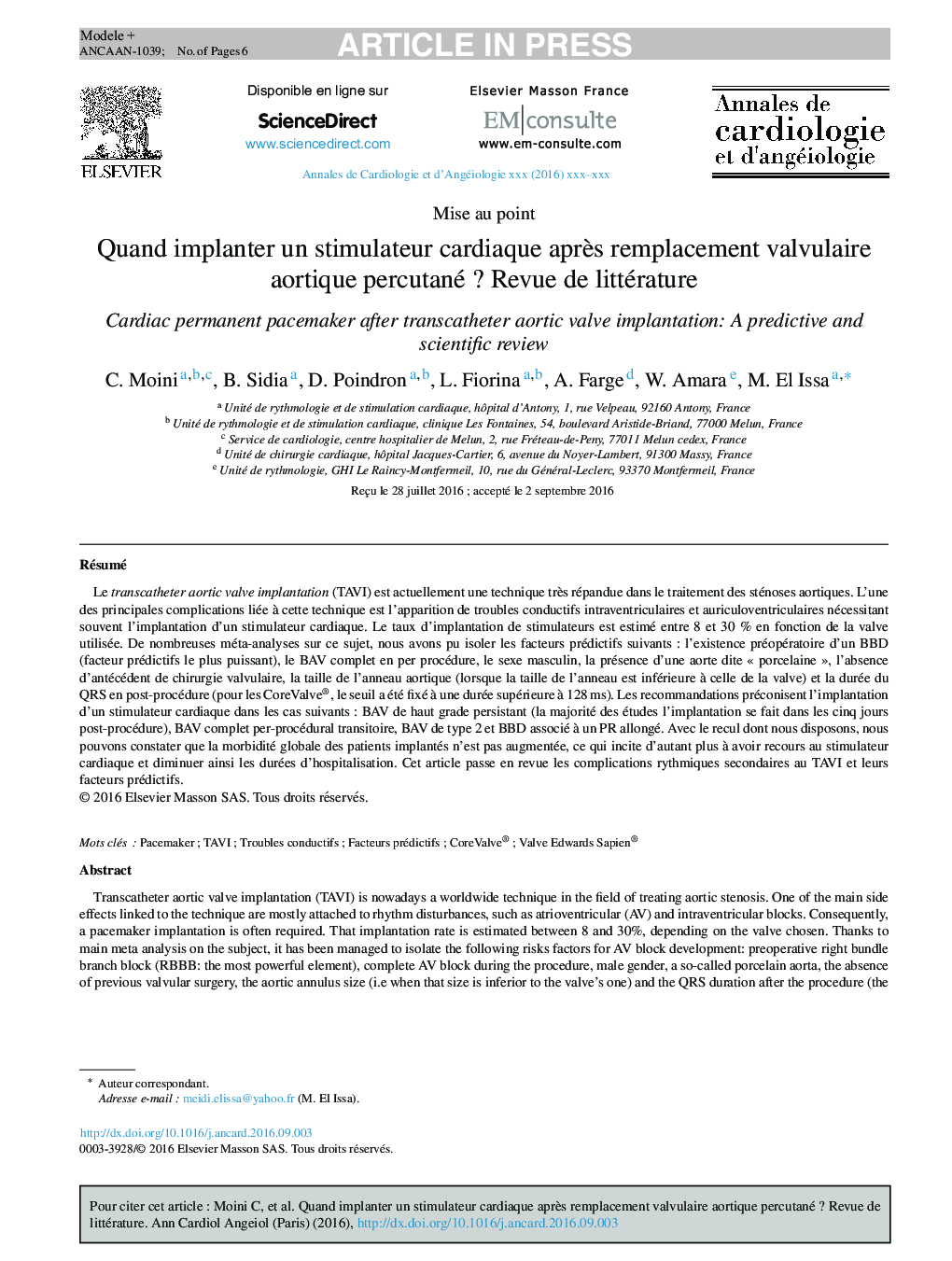| Article ID | Journal | Published Year | Pages | File Type |
|---|---|---|---|---|
| 5596518 | Annales de Cardiologie et d'Angéiologie | 2016 | 6 Pages |
Abstract
Transcatheter aortic valve implantation (TAVI) is nowadays a worldwide technique in the field of treating aortic stenosis. One of the main side effects linked to the technique are mostly attached to rhythm disturbances, such as atrioventricular (AV) and intraventricular blocks. Consequently, a pacemaker implantation is often required. That implantation rate is estimated between 8 and 30%, depending on the valve chosen. Thanks to main meta analysis on the subject, it has been managed to isolate the following risks factors for AV block development: preoperative right bundle branch block (RBBB: the most powerful element), complete AV block during the procedure, male gender, a so-called porcelain aorta, the absence of previous valvular surgery, the aortic annulus size (i.e when that size is inferior to the valve's one) and the QRS duration after the procedure (the superior threshold has been set at 128 ms for the Corevalve). The currently recommendations advice to implant a pacemaker are as followed: high grade AV block (in the main studies, the implantation occurs within the 5 days after the TAVI), complete and transient AV block during the TAVI, second degree AV block and RBBB associated with first degree AV block. Our article aims to review the arrhythmic issues of TAVI.
Related Topics
Health Sciences
Medicine and Dentistry
Cardiology and Cardiovascular Medicine
Authors
C. Moini, B. Sidia, D. Poindron, L. Fiorina, A. Farge, W. Amara, M. El Issa,
